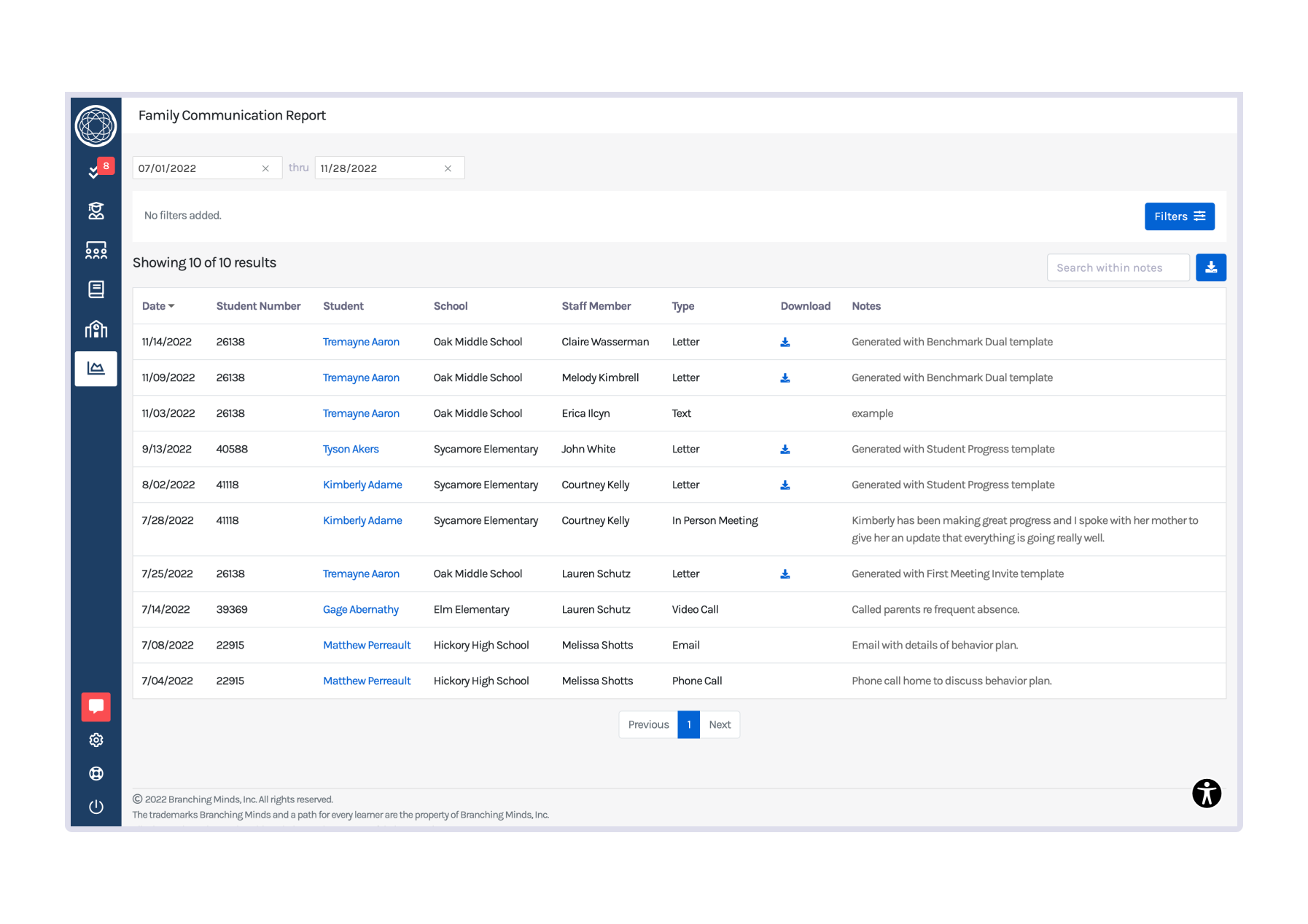Addressing Tier 3 behavior can be challenging, but utilizing a Multi-Tiered System of Support (MTSS) can make successful intervention planning both possible and practical in any size district.
Watch the On-Demand Recording
Chris Causebrook, District MTSS Specialist for Charlotte-Mecklenburg Schools (NC), and Trudy Bender, Senior Manager of Thought Leadership Content for Branching Minds, an MTSS platform, discussed the benefits of utilizing a system of proactive intervention during the edLeader Panel “Tier 3 Behavior Planning for School and District Leaders.”
“MTSS is a way of organizing the resources you have available to reach all your students,” Bender explained. “You want to take what you have and align it together into a system to make the very best use of your staff, your resources, your time, and your space to reach the whole child."
Bender and Causebrook presented four factors to have in place to make Tier 3 behavior intervention possible:
1. District and Campus Teams That Oversee Tier 3 Behavior Intervention
In Charlotte-Mecklenburg, which has 184 schools and serves more than 140,000 students, Causebrook said the district MTSS leadership team is made up of key district stakeholders. He advised, “Get the key players together to help build that robust framework of how you are going to address staffing, funding, technology, resources, and, most importantly, professional development.”
Causebrook also shared slides during this part of the panel that illustrated further detail on MTSS Teaming Structure Recommendations, Team Member Roles, Action Steps, and Monthly Topics.
2. Universal Screening for Behavior
Bender highlighted screening tools that are integrated into the Branching Minds platform, such as the SRSS-IE, a behavioral risk screening tool, and the SECA and DESSA student strengths assessments. “Screening is that safety net that prevents any kid from falling through the cracks,” she said.
The SRSS-IE, she explained, screens beyond external behaviors and helps identify students who may be withdrawn, depressed, anxious, or lonely. “You are missing out if you are not screening on internalizing behaviors,” she said. “If we can see the signs early, identify those students, and address them with additional supports, we can help change those outcomes and give them a positive future.”
→ Learn more about Tier 3 Behavior Intervention: Tier 3 Behavior Intervention Guide for School Leaders
3. Designated Staff and Space
Bender recommends having a person trained in Tier 3 behavior intervention and a designated place where issues can be addressed. “Behavior staff trained and protected in their role as positive intervention support can make a lasting difference,” she said. “If you don’t have a place and a person to deal with Tier 3 behavior, the Tier 3 behavior is still going to occur.” She cautioned, “Underskilled or overwhelmed behavior staff can actually make things worse.”
4. Professional Development and Coaching for Teams
Incorporate time for continuous improvement and progress monitoring. “We emphasize this from the start,” Causebrook said.
The pair also addressed practical intervention practices such as having Tier 3 intervention structures and content designed for school staff, easily accessible individual behavior plan details and visual behavior data, and a system for family communication and involvement.
“We have the Standard Treatment Protocol, which means you have a way of doing things that’s written down so everyone knows what the expectations are,” Bender said. “Just that step can make a huge difference.”
Causebrook shared his school’s Standard Treatment Protocol which includes resources, intervention summaries, potential training, and other features. Using an MTSS platform such as Branching Minds ensures that when you develop a plan, you are going to be able to find the intervention that is directly aligned with the Standard Treatment Protocol. It’s equitable and allows tracking of what’s working and what’s not.
Bender highlighted the importance of communication tracking that these platforms can offer, “Sometimes you’ll realize that nobody’s contacted the parent, or that eight people have contacted the parent in the last week to tell them that their kid has terrible behavior. That’s not helpful. We want to coordinate that and make sure that there are some positive messages going home as well. Communication tracking gives you a way of easily doing that.”

The visual data component of MTSS platforms provides insight into small changes and patterns that aren’t available from a student information system. “Visual data allows us to see if the interventions we’re putting in place correlate with the behavior patterns we’re seeing. Are we seeing a change? Is it getting better? Getting visual data to your campuses will make a big difference,” Bender said.
*Original Article found here.
Other resources to check out:
- Webinar Recap: Check In Check Out and Beyond: Tier 2 Behavior Interventions That Build Relationships & Foster School Connectedness
- Blog: How To Utilize Behavior Staff Effectively in MTSS/PBIS
- On-Demand Webinar: Tier 3 Behavior Planning and Wraparound Supports [Part 1]
Ready to make your MTSS vision a reality? 🚀Request a Demo to learn more about supporting students using Early Warning Indicators through the Branching Minds Platform.
|
About the author
[Guest Author] Diana St. Lifer
Education Writer, edWeb.net

Your MTSS Transformation Starts Here
Enhance your MTSS process. Book a Branching Minds demo today.
















.png?width=716&height=522&name=Behavior%20Progress%20Monitoring%20(Preview).png)
.png?width=716&height=522&name=Tier%203%20Behavior%20Support%20Planning%20(preview).png)